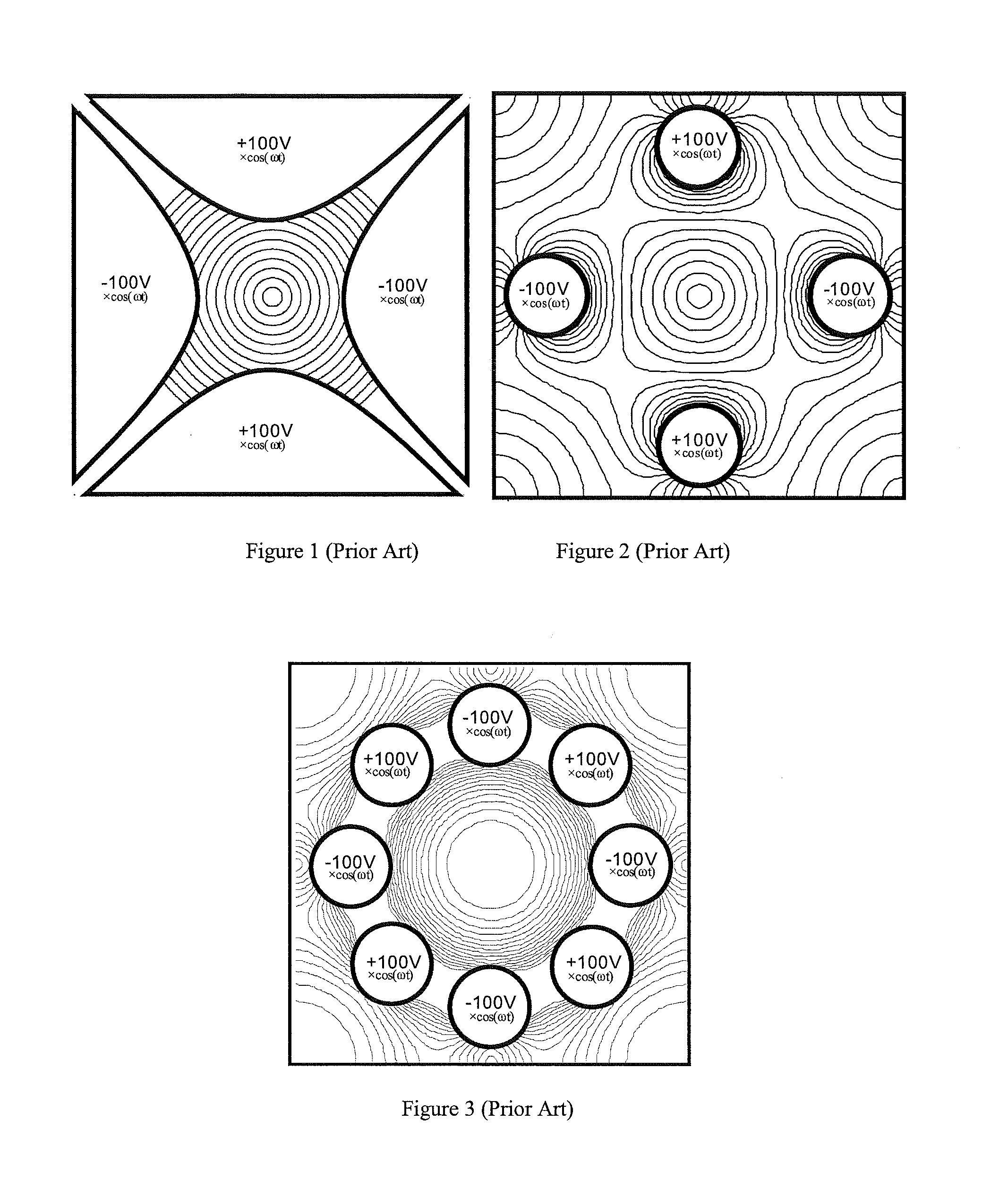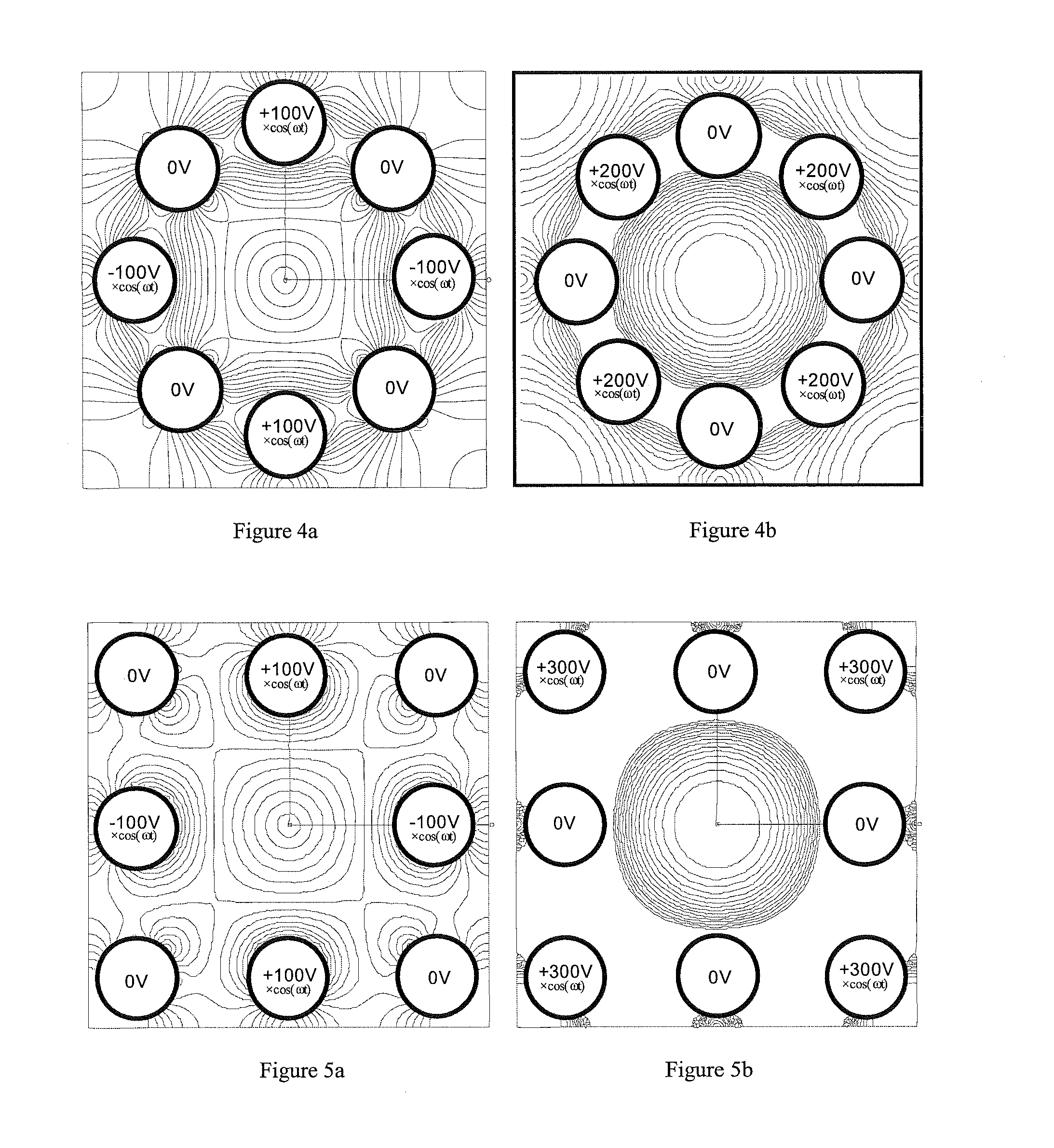Mass spectrometric ion storage device for different mass ranges
a mass spectrometric and ion storage technology, applied in the field of mass spectrometer storage devices and methods, can solve the problems of large loss of heavy ions, inability to store electrons in conventional systems, and inability to achieve high fragment yield
- Summary
- Abstract
- Description
- Claims
- Application Information
AI Technical Summary
Benefits of technology
Problems solved by technology
Method used
Image
Examples
Embodiment Construction
[0040]An ion storage system which comprises an RF multipole rod system with at least eight pole rods and two RF generators, where at least one of the two RF voltages is supplied so as to be distributed uniformly to only half of the pole rods in each case. One of the two RF voltages supplied has two-phase; the other can be single-phase with respect to ground potential. It is possible to set frequencies and amplitudes independently of each other. With this ion storage system, surprising effects can be generated which have not been thought possible until now.
[0041]In one of the embodiments of the ion storage system with eight pole rods, it is possible to store low-energy electrons and multiply charged heavy positive ions together, for example. To achieve this, an RF octopole field with a frequency of 1 megahertz and an amplitude of 1000 volts, which effectively acts only on the ions, is superimposed on an RF quadrupole field with a frequency of 200 megahertz and an amplitude of 100 vol...
PUM
 Login to View More
Login to View More Abstract
Description
Claims
Application Information
 Login to View More
Login to View More - R&D
- Intellectual Property
- Life Sciences
- Materials
- Tech Scout
- Unparalleled Data Quality
- Higher Quality Content
- 60% Fewer Hallucinations
Browse by: Latest US Patents, China's latest patents, Technical Efficacy Thesaurus, Application Domain, Technology Topic, Popular Technical Reports.
© 2025 PatSnap. All rights reserved.Legal|Privacy policy|Modern Slavery Act Transparency Statement|Sitemap|About US| Contact US: help@patsnap.com



